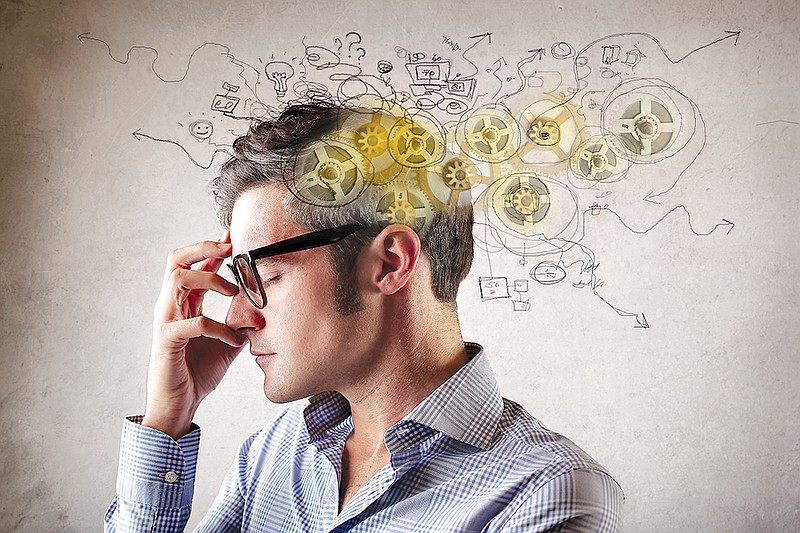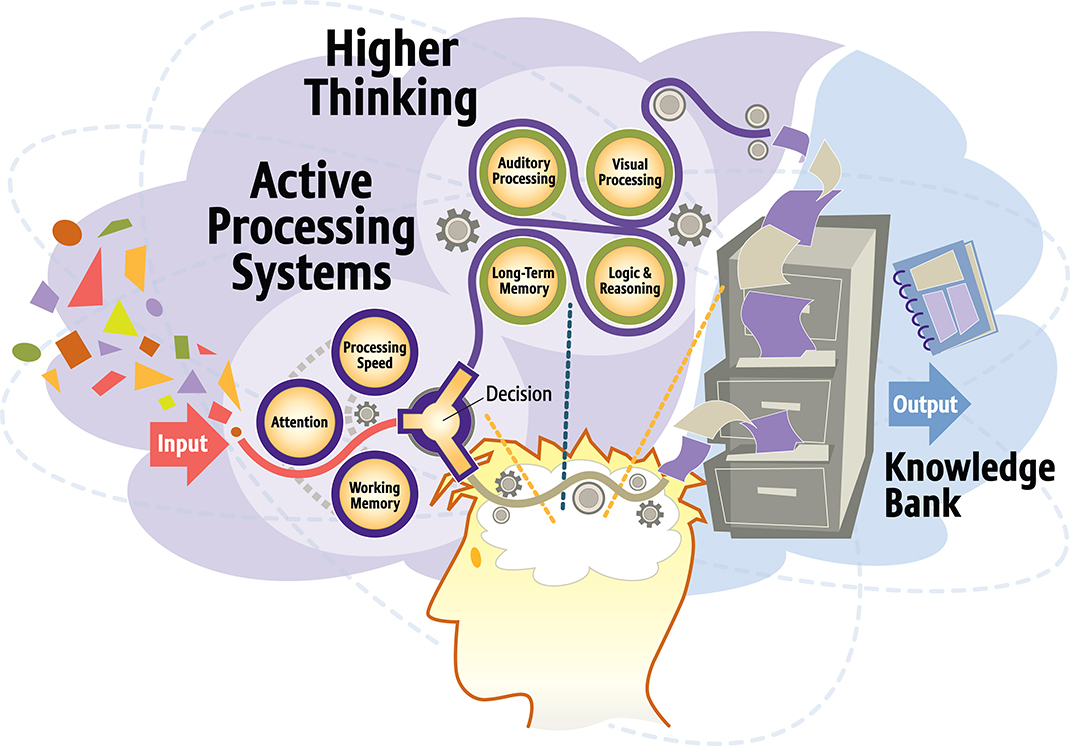…the brain has the the ability to change any time through life. The brain can change by increasing the efficiency with which it communicates with itself.
Think of a grocery list: milk, eggs, bread, peanut butter and cheese. Now, imagine pouring the milk into a round glass.
As that glass sits in your hand, it begins to morph into an egg. When you crack the egg, two pieces of bread appear as if they've hopped out of a toaster. But when you touch the bread, it melts and covers your hands in sticky peanut butter. And then you grab a cloth to wipe it off, but you actually grab a block of cheese.
That's an incredibly rough version of the kind of memory device taught by the brain trainers at LearningRx, a national franchise that provides cognitive skill assessments and lessons. This specific technique has to do with visualization, which can help someone remember a list by linking all of the items together through images.
But what exactly is brain training?
"The idea behind it has to do with neuroplasticity," says Michelle Davis, director of LearningRx Chattanooga, the only dedicated brain training center in the city. "Essentially, it means the brain has the the ability to change any time through life. The brain can change by increasing the efficiency with which it communicates with itself."
Growing that efficiency, primarily focusing on cognitive skills like remembering and paying attention, comes from brain training. And though many may think brain training is best suited for students, adults can benefit just as much from the exercises.
By now, most people have heard of brain training games you can download to your phone, such as those by brands Lumosity and Peak. Generally, these games take the player through exercises that are timed, and may be used once a week for 20 minutes. Davis says these digital programs work in regards to neuroplastic change, but they tend to fall short in some core areas.
" It's digital, so it's self-managed, so if you're having difficulty in a certain area, then it's difficult to push yourself," she says, adding that the difference between digital apps and something like LearningRx is akin to purchasing a gym membership versus hiring a personal trainer. "You just really need consistent training to take place, anywhere from three to five hours a week."
LearningRx's team of professional brain trainers work one-on-one with an individual and target specific areas that need to be worked on.
"Our programs can actually show changes in the brain and changes in IQ," Davis says.
One of the first exercises a brain trainee does is recite all the presidents of the United States. Just like the visualization technique using the grocery list, instead of a list of names, a string of images is used to help the reciter remember the presidents in order.
With practice, all of LearningRx's trainees can recite the list of presidents forwards and backwards in 40 seconds, so this visualization process is a valuable memory technique, Davis says.
The cognitive skills that the brain trainers focus on are attention, memory, including long- and short-term, or "working memory"; and processing speed, including visual and auditory processing - skills the brain uses daily, Davis says.
"The same reason that physical exercise is important for our bodies, mental exercise is important for our minds," she says.
But does it really work?
It does, according to the "Karate Kid" of brain training, Eddie Russell, president of local security, custodial, landscaping and maintenance company ERMC. He compares himself to the Karate Kid because, at first, he didn't know how the exercises he and his LearningRx trainer were doing were helping his cognitive skills, but after giving it time, he began to see a difference.
"My mental endurance has improved. I can work longer and harder on tasks, and therefore get them done more quickly and efficiently," Russell says. "I can understand foreign accents better due to the training in auditory processing, which is extremely helpful in international interactions. My ability to block out distractions has improved greatly. I am no longer avoiding difficult tasks, so [my] procrastination has decreased. I am using memory techniques learned in training to remember vital information in my daily work."
In fact, Russell has seen so much improvement from his experience that he wants to develop a program at ERMC to improve the company's overall efficiency through training for his employees.
A 'noo' kind of help
Far away from the Scenic City, Silicon Valley techies are on the cutting edge of a new way to improve brain function: nootropics. Named for the Greek word "noos," meaning "mind," nootropics are the latest trend touting improved, sustained brain function, memory, ability to juggle multiple tasks and more. Though studies behind the supplements - some of which are sold as a combination of known ingredients such as caffeine and ginkgo biloba in addition to receptor-enhancing drugs - are limited and new, the market is growing rapidly. Already, several companies have created specialty blends deemed 100 percent FDA-safe, and claim their neuroscientists have concocted a supplement to enhance cognitive function. Though widely available nootropics have not been around long enough for long-term safety studies, the idea itself is not new. Piracetam, considered the first nootropic, was synthesized in Europe in the 1960s and studies have yielded positive results in healthy individuals. The new brand of "smart drugs" sold by companies such as San Francisco-based Nootroo and Nootrobox, are nothing like the "Limitless" drugs in the Bradley Cooper film. But those willing to give nootropics a try (and pay the hefty price tag associated with many of them) can decide for themselves.

